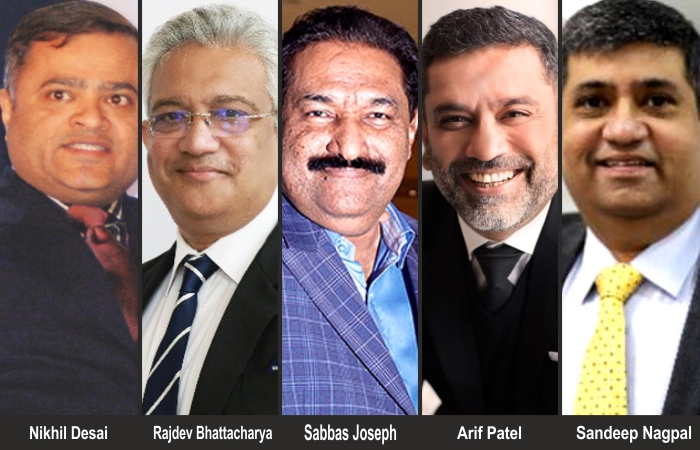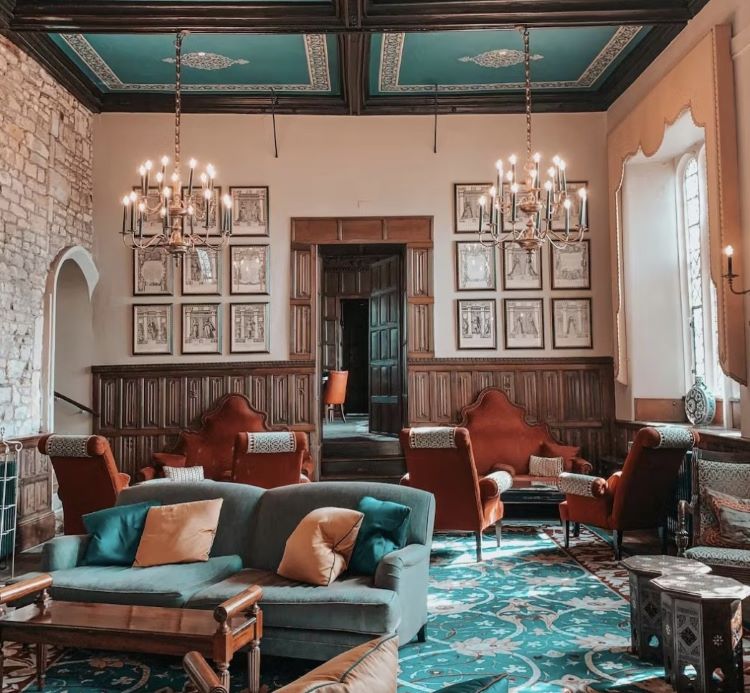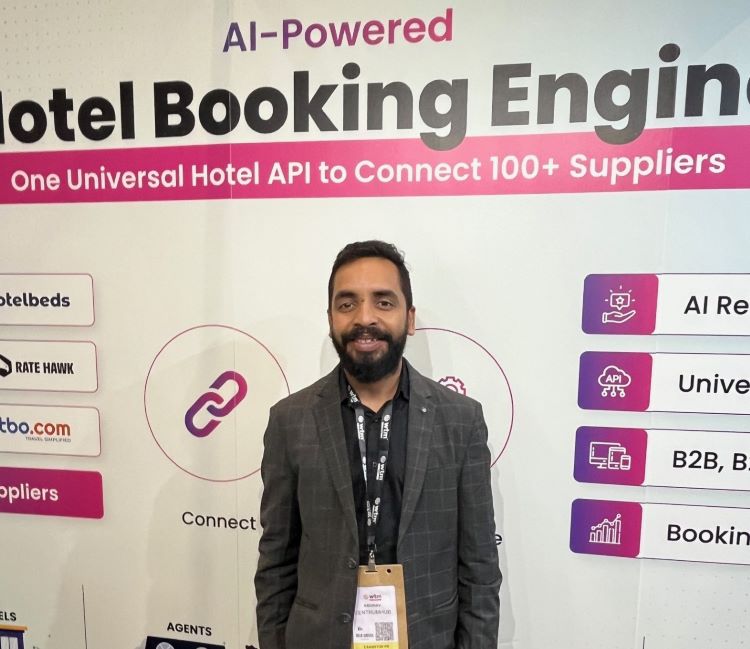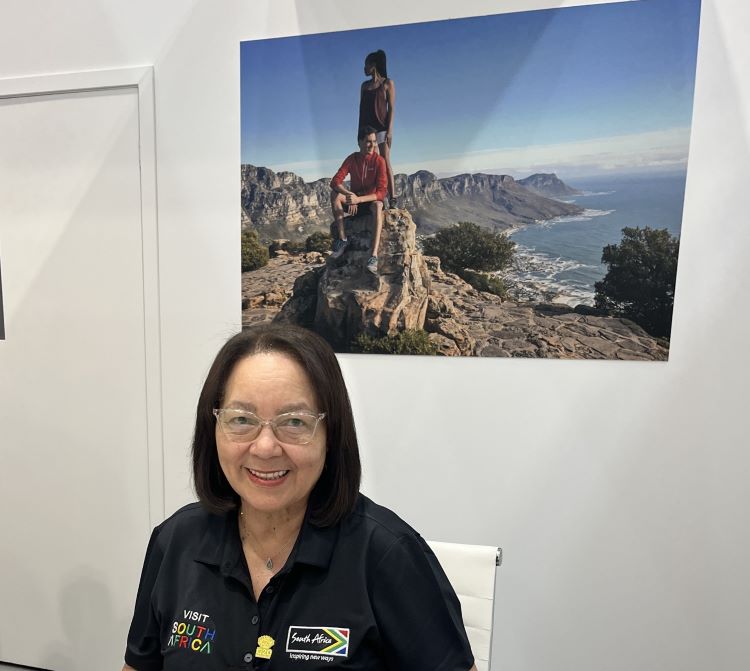Five stalwarts from different segments of the M!CE industry came together the recent M!CE Digital Conclave to share their views on how India can be developed as a hub for events and weddings – with a cohesive effort, government support, and most of all, investing in and evolving with technology.
Hazel Jain
The M!CE talk Digital Conclave, powered by Cvent India, on rebooting the Indian MICE landscape held on 25th August, 2021, brought together five great minds who examined ways in which India can be developed into a M!CE behemoth with a little bit of ingenuity and effort from the stakeholders.
According to 2019 figures, approximately 32,000 exhibitions are held annually across the globe. Which means that at any given day there are close to 300 exhibitions opening in some part of the world. The Indian government has realised the long-term sustainability and benefits of this industry and has recently drafted a MICE Tourism policy. It says that the Indian MICE industry has less than one per cent share of the estimated global MICE business.In fact, the Ministry of Tourism, Government of India, conducted a MICE study in 2019 which said that the Indian MICE market is actually sized at Rs 37,576 cr., 60 percent of which is attributed to Meetings and Incentives.
Small has become big
The world that we operate in has changed, says Sabbas Joseph, Founder-Director at Wizcraft International Entertainment. “It is a world where you don’t want to touch and don’t want to be in large crowds. So small has really become big. Hence, we need to dive in that much deeper to deliver the same experience. How can you do small and still make a big impact, get larger audience? We are now in a ‘phy-gital’ world – a hybrid world,” he says.
Highlighting the role of the government in this,Joseph adds, “The role of governments, especially in India, must find resonance in what our PM is talking about: Atmanirbhar! Never has it been more important to be self-reliant than now. We have now embarked on the right message with ‘Dekho Apna Desh’. Explore India, Understand India, Visit India. With 1.3 billion people, we must give them that global experience within India, give them that high quality luxury experience in India.”
He feels that governments often don’t recognise the value addition that M!CE is making to the local economies. “Failing to do so they do not provide them the support. That is where India’s biggest failure has been. Goa recognised this long ago and began investing in MICE. Across the country, we require to see more and more of this. Second part – we need to see collaboration from the governments. They are not complete on their own. They must realise that they need to collaborate with event management companies, with hotels, airlines, tour operators, etc because we complete the journey. It’s the rest of us that can work with them to make that MICE opportunity real. And that collaboration factor is missing,” Joseph says.
Collab through technology
The other aspect, Joseph brings out, is that the government has gone very heavily into technology.“But it is in bits and pieces. That technology must be made available to the M!CE industry, be it with the Aarogya Setu app – collaborating with the M!CE industry will help make events that much safer.We are already arriving in the world of digital passports globally. But I think there is a need for collaboration using Artificial Intelligence, understanding the consumer and being able to predict patterns and behaviour. From the government, I want infrastructure, technology-enabled solutions, transparency in collaboration is needed across the board. There is no recognition of event tourism nor wedding tourism. Invest in experiences. Finally, the government needs to get down to marketing along with the industry, not on its own. So when you’re marketing a destination, market everyone who provides services in that destination. So work with the hotels and airlines, joint marketing plans, joint marketing budgets,” Joseph says.
The government angle
With Goa as one of the foremost destination for MICE and weddings in India, it was imperative to get its perspective on this. Nikhil Desai, Managing Director, Goa Tourism Development Corporation, agrees that the entire strategy will have to be spear-headed by the government. “It can create an effective and enabling environment for the private players. Goa has taken steps in the right direction. As we speak, there is a state-of-the-art Rs 100 crore 1,400-seater convention centre coming up in the heart of the city, expected to be complete by May 2022. This will cater to small and medium-sized events. I am also very happy to share that in the past few days Goa government has offered land in Dona Paula wherein a 5,000-seater convention and expo centre is being built along with a host of other support infrastructure like five-star hotels. The tendering process is already concluded. This illustrates how the state government can come in and do a model – either a PPP or a brownfield project – and create enabling infrastructure for investors to come in and stay invested,” he says.
Secondly, Desai says that MICE admittedly is a highly competitive and globalised business and destinations compete with each other globally in terms of facilities and lower tax, and other incentives, to attract events. “Unfortunately, our country has not been able to be there because of our high taxation rates and non-availability of differential pricing for such events. This puts a lot of pressure on the pricing, as a result of which MICE in India does not make a lot of business sense. It makes far more sense for people to do MICE events outside India. So governments will have to play a very important role in this regard,” Desai adds.
He believes that to make India a credible MICE destination, there needs to be a brand awareness and a brand equity through sustained brand building and to showcase to the rest of the world the facilities we have to offer. Because India has a lot to offer, and MICE per se is not only about events. It also often involves leisure travel. “Also, the industry needs to be given tax benefits and GST benefits, especially for those investors who come in for greenfield projects. These issues need to be taken up with top priority. States should compete with each other to win events in order to build a good MICE brand. Goa is now looking forward to the opening of the Mopa International airport likely by August 2022 and that is going to be a massive milestone for us,” Desai shares.
Invest in technology
On a more positive note, he adds that the current scenario is a temporary blip on the radar, notwithstanding temporary right-offs that are happening across the industry with pundits saying that MICE won’t be the same.“I respectfully disagree with them, I think this is a temporary situation. We all need to invest in infrastructure because the pandemic will be soon behind us. Businesses have to keep their strategies fluid and have to be aware of the latest developments. In this regard, every hotel and MICE venue will have to invest heavily in technology and ensure that they create the necessary infrastructure to conduct hybrid events so that the level of engagements with clients can go up. I think that is a task best left to a private sector and the governments can create an enabling environment and infrastructure. For instance, we will be engaging a private player for our 1,400 convention centre who can then invest in technology and take the service several notches higher. Because it is an accepted fact that the private sector can offer much better services and can be far better responsive whereas the government strengths are infrastructure and policies,” Desai adds.
Virtual or physical?
Bringing some more ideas on what the corporate clients would want right now, Rajdev Bhattacharya, Global Head (Travel & Hospitality) & Business Head, WAY2GO and GM, Global Travel Services, Wipro, says that technology has its own limitations and right now that personal experience is missing. “My view is that whatever happens during the pandemic mindset, and whatever decision and predictions we have made during the pandemic has not happened. Even now, we are taking a lot of decisions with the pandemic mindset. While virtual meetings have worked, it will only be another medium added to meeting people. I don’t think it will replace physical meetings. The hybrid model is here to stay. MICE will be in a different form and shape. So let us embrace the fact that things have changed. Let us see the opportunity of what we can be rather than bring back what it was.Whether corporates will start to travel long-haul, it’s a function of business. I believe this is a temporary blip. The need to meet people to do business or events has not gone. Whether it is the UK or USA, we are just waiting for flights to come back,” he adds.
Hybrid is the new normal
To wish away and to say that virtual events will take over is a myth, feels Sandeep Nagpal, VP & Head of Marketing, Cvent India. He says that we have learned to live with the pandemic. “And we are already seeing that people are starting to have meetings and going back to offices. It’s just a matter of time when physical events will be back. At the same time, the virtual will go hybrid and the scheme of things will be very different. Physical events will happen, but the same events will be viewed by thousands virtually. That is an opportunity both for planners as well as hotels. We are in a unique position today. There are a lot of venues in the world that are transforming themselves into hybrid venues. For two reasons – one there are thousands of people who can’t make it to the event, the second is even at the venue people will consume a lot of stuff virtually. So you will have to create a studio experiences. Therefore, the venues are transforming themselves into physical venues as well as hybrid venues. There are studios available now worldwide where they are creating hybrid experiences for people. At the same time, there is also a need for us to make people understand that the consumption of experiences will be different virtual and physical. And we need to cater to both. The earlier we realise this and the venues realise this, the better it is,” Nagpal adds.
Virtual events were always there, what is happening now is that they are now merging with the physical. “And that is what the future will hold. Technologies are now available for doing this. We provide technologies to both hotels and planners where we can provide both physical and virtual event experiences,” Nagpal says.
A huge proponent of technology, Nagpal also touches upon the importance of data. He says, “Another aspect of business intelligence is that, particularly in the current scenario, the availability of data, the business intelligence – in terms of the occupancy rates, what your competitor is doing – this kind of intelligent data has become absolutely critical for hoteliers. This has become like a technological intervention that companies like us are providing. We are hopeful that hotels will start now using these services. I believe, we have taken a leap of five to seven years – from the perspective of technology adoption. We are seeing both from our planner side and the hotels side that the digital re-invention is happening. The pandemic has given us this opportunity and we need to start using that data from the various sources and the technologies that are available to provide experiences. There is no better time than now than to be atmanirbhar.”
Touchless technology
There are two aspects to touchless technology – one is at the time of sourcing of venues. Nagpal says, “There are now technologies available that based on social distancing norms, you could actually do a 3D diagram remotely and you can collaborate with the venues remotely and create an experience while planning the actual event. So you don’t have to be physically present at the venue during the planning stage. So those kind of 3D diagraming tools are now available. Second is check-ins. They are always a big problem for groups. That entire process has been automated and are available now as tools. This has always been around but the option has now been accelerated. Technology should be used now and a lot of hotels are already using it – both for check-ins as well as for designing and sourcing venues.”
He feels that in the end, it boils down to safety – which is the new luxury. “Secondly, the industry needs to get tech-savvy. Start investing in digital re-invention that is required by the industry. We have been laggards when it comes to technology as an industry. But we need to start doing this now. We also need to be agile, need to make decisions now and keep evolving,” Nagpal points out.
A cohesive effort
Hybrid will be the new normal, feels Arif Patel, Regional VP, Sales & Marketing, Hyatt India. Sharing a hotelier’s perspective, he says we are already seeing early signs of recovery. “If one demand rises, there is a new segment that will take over. Pre-pandemic, staycations in India was in a nascent stage. But after the second wave, hotels in hill stations recovered their RevPAR because of this segment due to pent-up demand,” he adds.
What the pent-up did is it got business into hotels. “Now we are seeing a direct correlation between vaccination and people taking flights. In hotels, we are seeing in recovery is that upper-upscale and luxury have recovered faster than mid-scale and economy. There are two reasons for this: the price for upscale hotels have come down and there is higher brand reassurance for guests. The third part,a large part of the Indian outbound pre-Covid was incentives and weddings. I don’t see that demand going out of India for at least another year. These are people with disposable income and companies spending on experiences,” Patel says.
He believes that the M!CE pent-up demand is going to be huge. “You cannot expect a company not to do business for two years or not to organise meetings. In terms of weddings, it is a USD 50 million market growing at 25 per cent CAGR. Weddings is ‘the’ event in our society especially in certain communities. If there were 100 weddings happening in India on a particular day, there were 1,000 happening out of India. But that will change as people are not going to take the risk of travelling with family elders. Even June-July last year, there were no hotels in India where there were no weddings.
Today, you look at destinations like Goa and Kochi, we are back!” Patel adds.
He requests fellow hoteliers to be flexible in terms of their cancellation and refund policies. “This will encourage guests to take risks with us and go ahead with their bookings. We will bounce back! I see large-format MICE events and national conventions coming back by Q4 of 2022. We need to come together and put in all resources and ideas. It has to be a united, cohesive effort,” Patel says.
 TravTalk India Online Magazine
TravTalk India Online Magazine





